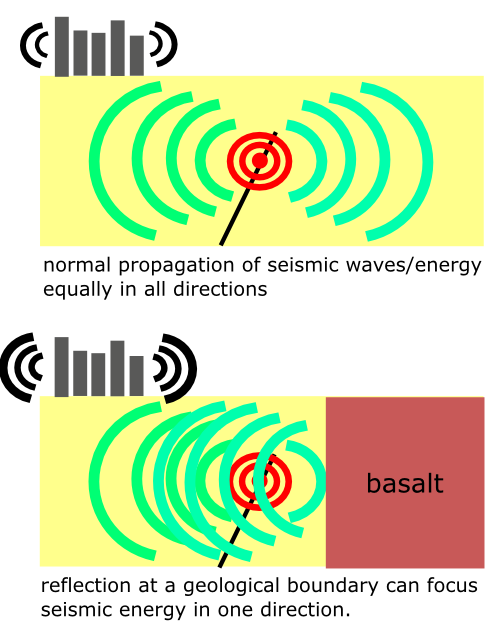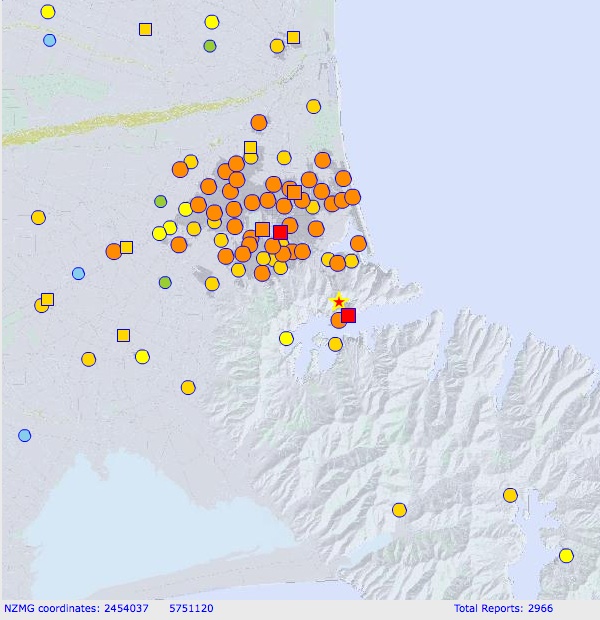![]() Even taking into account how close the rupture point of Tuesday’s earthquake was to Christchurch, the intensity of the shaking – and the amount of damage that the city suffered as a consequence – seems to be very high for a magnitude 6.3 earthquake. The fact that the city is built on soft sediments that amplify shaking is an obvious factor here, but an article in the New Zealand Herald raises the possibility that geological structures in the region may have acted as a ‘seismic lens’, focussing the seismic energy released in the earthquake towards Christchurch.
Even taking into account how close the rupture point of Tuesday’s earthquake was to Christchurch, the intensity of the shaking – and the amount of damage that the city suffered as a consequence – seems to be very high for a magnitude 6.3 earthquake. The fact that the city is built on soft sediments that amplify shaking is an obvious factor here, but an article in the New Zealand Herald raises the possibility that geological structures in the region may have acted as a ‘seismic lens’, focussing the seismic energy released in the earthquake towards Christchurch.
If we plot the earthquake’s epicentre on a geological map of the central South Island of New Zealand (courtesy of this handy interactive map from GNS), we can see it is close to the edge of the Banks Peninsula – the eroded remnants of two basaltic shield volcanoes that were active around 10 million years ago.

Location of Feb 22 earthquake plotted on a geological map of the Christchurch region, showing the Miocene volcanics of the Banks Peninsula (pink) rising above the young clays, silts and gravels of the Canterbury Plains (tan). Source: GNS
The hard volcanic rocks that make up the Banks Peninsula are very different from the soft sediments that underlie Christchurch. The huge contrast in physical properties across the boundary between these two units means that any seismic waves hitting the boundary would mostly be reflected back the way they came. So, instead of spreading out equally in all directions, a large proportion of the seismic energy released in a nearby earthquake would end up being sent away from the boundary with the basalts – which, unfortunately, is towards Christchurch.

How seismic lensing might concentrate seismic energy and boost shaking intensity.
As it stands, this idea is rather speculative – more work will be required to pin down the location of the fault before it can be proven one way or the other. But if seismic lensing was a factor in the very intense shaking Christchurch endured, the location of this week’s earthquake – in an ideal position to produce this effect – was doubly unfortunate.
Update Callan requested a shakemap that includes the Banks Peninsula. This is from GNS’ Geonet site, and included felt earthquake reports (circles) and instrumental peak ground accelerations (squares). As you can see, there is not much useful coverage on the Banks Peninsula, and although what is there could be interpreted as showing less shaking at an equivalent distance from the epicentre, this does not account for the effects of being on hard rock (basalt) rather than soft sediment, which will probably amplify the shaking even in the absence of other factors.

Shakemap for the Feb 22 earthquake (star)



Comments (17)
Links (1)-
Pingback: Magnitude 6.3 earthquake rocks Christchurch | Highly Allochthonous